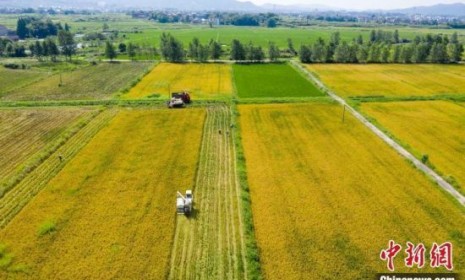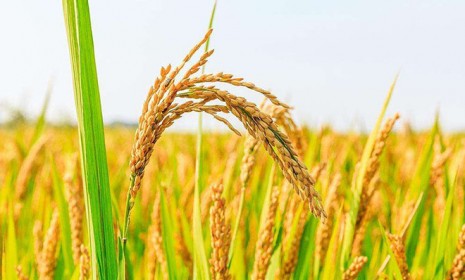近日,華中農(nóng)業(yè)大學(xué)生命科學(xué)技術(shù)學(xué)院、農(nóng)業(yè)微生物學(xué)國家重點實驗室環(huán)境微生物王革嬌教授團(tuán)隊在國際學(xué)術(shù)期刊Science of the Total Environment發(fā)表了微生物氧化有機(jī)硒和單質(zhì)硒的最新研究成果,首次證明了微生物參與土壤有機(jī)硒的氧化,增加土壤硒的生物有效性和植物可利用性,為植物富硒提供了新的思路。
硒(Se)是生命必需的微量元素,其中人體已發(fā)現(xiàn)25種硒蛋白,具有抗氧化、抗癌、抗病毒、提高免疫力等多種功能;硒對克山病、癌癥、阿爾茲海默癥等多種疾病具有治療和預(yù)防作用。植物主要吸收氧化態(tài)硒,且富硒農(nóng)業(yè)土壤中以還原態(tài)有機(jī)硒為主,但硒氧化的研究薄弱,微生物是否會氧化有機(jī)硒并如何影響植物吸收硒等尚不清楚。
該研究從含硒土壤中分離獲得四株硒氧化細(xì)菌,分別為戴爾氏菌Dyella sp. LX-1和LX-66,以及紅桿菌Rhodanobacter sp. LX-99和LX-100。在純培養(yǎng)條件下,菌株均可氧化硒代蛋氨酸(SeMet)、硒代胱氨酸(SeCys2)、硒脲和單質(zhì)硒Se(0)生成亞硒酸鹽,有機(jī)硒的氧化速率顯著高于單質(zhì)硒的氧化速率。在滅菌酸性或堿性土壤中,硒氧化細(xì)菌均顯著促進(jìn)有機(jī)硒和單質(zhì)硒的氧化。此外,在富硒土壤中,分別添加四株硒氧化細(xì)菌后,均顯著增加了土壤中水溶性硒(SOL-Se)、可交換及碳酸鹽結(jié)合硒(EXC-Se)的含量,顯著提升了土壤硒的生物有效性。華中農(nóng)業(yè)大學(xué)生命科學(xué)技術(shù)學(xué)院、農(nóng)業(yè)微生物學(xué)國家重點實驗室研究生羅雄和汪依婷為共同第一作者、鄭世學(xué)教授和李明順副教授為共同通訊作者,該工作得到國家自然科學(xué)基金41771283 和41967023的資助。
該工作是繼課題組2021年在Science of the Total Environment(https://doi.org/10.1016/j.scitotenv.2021.148294,第一作者朱達(dá)輝、通訊作者鄭世學(xué))發(fā)表農(nóng)桿菌T3F4氧化單質(zhì)硒并促進(jìn)小白菜富硒后的又一進(jìn)展。此外,該團(tuán)隊近年在微生物硒氧化方面獲批了5項國家發(fā)明專利。這些研究證實微生物廣泛參與了有機(jī)硒和單質(zhì)硒的氧化,進(jìn)而增加土壤硒的生物有效性和植物可利用性,為植物富硒產(chǎn)業(yè)提供了新的思路。另一方面,該研究結(jié)果打通了硒的生物地球化學(xué)循環(huán)中的重要一環(huán)。
英文摘要:
Selenium (Se) is an essential trace element for life. Se reduction has attracted much attention in the microbial Se cycle, but there is less evidence for Se oxidation. In particular, it is unknown whether microorganisms oxidise organic Se(-II)。 In this study, four strains of bacteria, namely Dyella spp. LX-1 and LX-66, and Rhodanobacter spp. LX-99 and LX-100, isolated from seleniferous soil, were involved in the oxidation of selenomethionine (SeMet), selenocystine (SeCys2), selenourea and Se(0) to selenite (Se(IV)) in pure cultures. The oxidation rates of organic Se were more rapidly than those of Se(0) in liquid media. Then Se(0) and SeMet were used as examples, microbial oxidation was the predominant process for both additional Se(0) and SeMet in sterilised alkaline or acidic soils. The Se(IV) concentrations were significantly higher at pH 8.56 than at pH 5.25. In addition, water-soluble Se (SOLsingle bondSe) and exchangeable and carbonate-bound Se (EXC-Se) fractions increased dramatically with these four Se-oxidising bacteria in unsterilised seleniferous soil. To our knowledge, this is the first study to find that various bacteria are involved in the oxidation of organic Se to Se oxyanions, bridging the gap of Se redox in the Se biogeochemical cycle.
原文鏈接:
http://dx.doi.org/10.1016/j.scitotenv.2022.155203
日期:2022-05-11
硒(Se)是生命必需的微量元素,其中人體已發(fā)現(xiàn)25種硒蛋白,具有抗氧化、抗癌、抗病毒、提高免疫力等多種功能;硒對克山病、癌癥、阿爾茲海默癥等多種疾病具有治療和預(yù)防作用。植物主要吸收氧化態(tài)硒,且富硒農(nóng)業(yè)土壤中以還原態(tài)有機(jī)硒為主,但硒氧化的研究薄弱,微生物是否會氧化有機(jī)硒并如何影響植物吸收硒等尚不清楚。
該研究從含硒土壤中分離獲得四株硒氧化細(xì)菌,分別為戴爾氏菌Dyella sp. LX-1和LX-66,以及紅桿菌Rhodanobacter sp. LX-99和LX-100。在純培養(yǎng)條件下,菌株均可氧化硒代蛋氨酸(SeMet)、硒代胱氨酸(SeCys2)、硒脲和單質(zhì)硒Se(0)生成亞硒酸鹽,有機(jī)硒的氧化速率顯著高于單質(zhì)硒的氧化速率。在滅菌酸性或堿性土壤中,硒氧化細(xì)菌均顯著促進(jìn)有機(jī)硒和單質(zhì)硒的氧化。此外,在富硒土壤中,分別添加四株硒氧化細(xì)菌后,均顯著增加了土壤中水溶性硒(SOL-Se)、可交換及碳酸鹽結(jié)合硒(EXC-Se)的含量,顯著提升了土壤硒的生物有效性。華中農(nóng)業(yè)大學(xué)生命科學(xué)技術(shù)學(xué)院、農(nóng)業(yè)微生物學(xué)國家重點實驗室研究生羅雄和汪依婷為共同第一作者、鄭世學(xué)教授和李明順副教授為共同通訊作者,該工作得到國家自然科學(xué)基金41771283 和41967023的資助。
該工作是繼課題組2021年在Science of the Total Environment(https://doi.org/10.1016/j.scitotenv.2021.148294,第一作者朱達(dá)輝、通訊作者鄭世學(xué))發(fā)表農(nóng)桿菌T3F4氧化單質(zhì)硒并促進(jìn)小白菜富硒后的又一進(jìn)展。此外,該團(tuán)隊近年在微生物硒氧化方面獲批了5項國家發(fā)明專利。這些研究證實微生物廣泛參與了有機(jī)硒和單質(zhì)硒的氧化,進(jìn)而增加土壤硒的生物有效性和植物可利用性,為植物富硒產(chǎn)業(yè)提供了新的思路。另一方面,該研究結(jié)果打通了硒的生物地球化學(xué)循環(huán)中的重要一環(huán)。
英文摘要:
Selenium (Se) is an essential trace element for life. Se reduction has attracted much attention in the microbial Se cycle, but there is less evidence for Se oxidation. In particular, it is unknown whether microorganisms oxidise organic Se(-II)。 In this study, four strains of bacteria, namely Dyella spp. LX-1 and LX-66, and Rhodanobacter spp. LX-99 and LX-100, isolated from seleniferous soil, were involved in the oxidation of selenomethionine (SeMet), selenocystine (SeCys2), selenourea and Se(0) to selenite (Se(IV)) in pure cultures. The oxidation rates of organic Se were more rapidly than those of Se(0) in liquid media. Then Se(0) and SeMet were used as examples, microbial oxidation was the predominant process for both additional Se(0) and SeMet in sterilised alkaline or acidic soils. The Se(IV) concentrations were significantly higher at pH 8.56 than at pH 5.25. In addition, water-soluble Se (SOLsingle bondSe) and exchangeable and carbonate-bound Se (EXC-Se) fractions increased dramatically with these four Se-oxidising bacteria in unsterilised seleniferous soil. To our knowledge, this is the first study to find that various bacteria are involved in the oxidation of organic Se to Se oxyanions, bridging the gap of Se redox in the Se biogeochemical cycle.
原文鏈接:
http://dx.doi.org/10.1016/j.scitotenv.2022.155203
日期:2022-05-11















